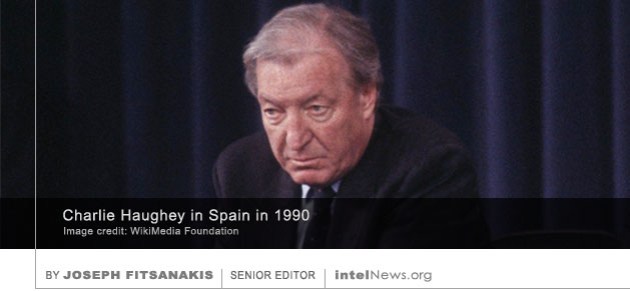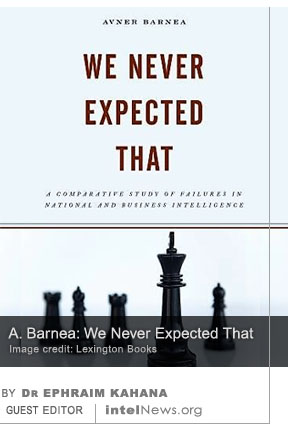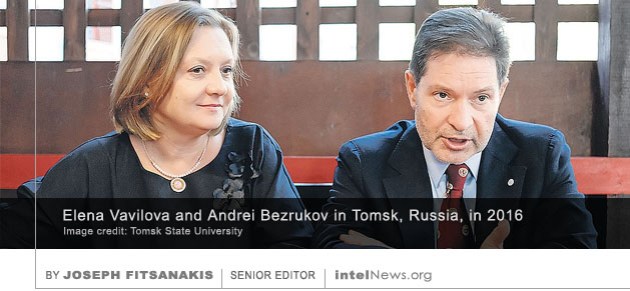Book review of “Agent of the Iron Cross” a masterful historical account by Bill Mills
March 21, 2024 2 Comments
 FEW THINGS ARE AS valuable in the field of intelligence studies as delving into historical case work. Indeed, the study of intelligence history is indispensable for anyone wishing to engage in the contemporary setting of this often esoteric -yet critical- field. As an academic specializing in intelligence, I find Bill Mills’ Agent of the Iron Cross: The Race to Capture German Saboteur-Assassin Lothar Witzke during World War I, to shed invaluable light on clandestine operations that unfolded on American soil during the tumult of World War I. Mills masterfully chronicles the gripping saga of Lothar Witzke, a German saboteur-assassin, and his audacious exploits on American soil.
FEW THINGS ARE AS valuable in the field of intelligence studies as delving into historical case work. Indeed, the study of intelligence history is indispensable for anyone wishing to engage in the contemporary setting of this often esoteric -yet critical- field. As an academic specializing in intelligence, I find Bill Mills’ Agent of the Iron Cross: The Race to Capture German Saboteur-Assassin Lothar Witzke during World War I, to shed invaluable light on clandestine operations that unfolded on American soil during the tumult of World War I. Mills masterfully chronicles the gripping saga of Lothar Witzke, a German saboteur-assassin, and his audacious exploits on American soil.
Mills’ captivating narrative unfolds against the backdrop of a world engulfed in conflict, where espionage becomes a weapon of choice for a host of warring factions. Witzke’s ambitious mission, orchestrated by German intelligence, epitomizes the high-stakes game of espionage during wartime. It is replete with a host of master spy characters, the inevitable double agents, and even ingenious sabotage devices. Although this book is not a novel, Mills intricately weaves together in a novel-like manner the threads of intrigue, offering readers a riveting account of Witzke’s daring escapades and the shadowy world of espionage that defined that relatively unexplored era in the history of intelligence.
What sets Agent of the Iron Cross apart is Mills’ ability to contextualize Witzke’s actions within the broader canvas of the historical context it which they unfolded. Through vivid prose and meticulous detail, Mills unravels the layers of deception and intrigue that characterized Imperial Germany’s covert operations on American soil. From the near-sinking of the commissioned ocean liner SS Minnesota to the clandestine explosion on Black Tom Island, Mills paints a vivid portrait of a world teetering on the brink of chaos. Standard accounts of that era underplay the role of intelligence, so it is refreshing for a professor specializing in intelligence to read Mills’ detail-oriented narrative.
At its core, Agent of the Iron Cross is a testament to the enduring allure of espionage and its profound impact on statecraft and the course of history. Mills’ narrative prowess and exhaustive research offer readers a glimpse into a little-known chapter of World War I history, underscoring the complexities of intelligence work and its far-reaching consequences. By delving into historical case studies such as this one, Mills provides invaluable insights into the nature of espionage, its challenges, and its enduring relevance in our ever-evolving world.
 THE RUSSIAN INTELLIGENCE SERVICES planned to assassinate a Russian former intelligence officer, who had defected to the United States and was living in an apartment complex in Florida, according to a new report. The alleged assassination plan is discussed in the forthcoming book Spies: The Epic Intelligence War Between East and West (Simon and Schuster), authored by Harvard University academic Calder Walton.
THE RUSSIAN INTELLIGENCE SERVICES planned to assassinate a Russian former intelligence officer, who had defected to the United States and was living in an apartment complex in Florida, according to a new report. The alleged assassination plan is discussed in the forthcoming book Spies: The Epic Intelligence War Between East and West (Simon and Schuster), authored by Harvard University academic Calder Walton. A NEW BOOK BY a veteran Irish journalist claims that the late Taoiseach (prime minister and head of the government of Ireland) Charlie Haughey was in effect an informer of the Provisional Irish Republican Army in the 1960s and 1970s. Written by Kevin O’Connor, the longtime political correspondent of The Sunday Independent, the book also claims that Haughey maintained regular contact with the leadership of the IRA throughout the 1970s.
A NEW BOOK BY a veteran Irish journalist claims that the late Taoiseach (prime minister and head of the government of Ireland) Charlie Haughey was in effect an informer of the Provisional Irish Republican Army in the 1960s and 1970s. Written by Kevin O’Connor, the longtime political correspondent of The Sunday Independent, the book also claims that Haughey maintained regular contact with the leadership of the IRA throughout the 1970s.
 IN HIS NEW BOOK, We Never Expected That: A Comparative Study of Failures in National and Business Intelligence (Lexington Books), Dr. Avner Barnea has coined two new terms in the field of strategic surprise. One is diffused surprise and the other is concentrated surprise, two terms that help us to better understand why intelligence failures occur. In a diffused surprise there is difficulty in identifying the intelligence target and therefore the chance of a surprise increases; while in a concentrated surprise the intelligence target is usually a recognized organization. At the same time, the mistake lies in the assessment of the target’s abilities and intentions.
IN HIS NEW BOOK, We Never Expected That: A Comparative Study of Failures in National and Business Intelligence (Lexington Books), Dr. Avner Barnea has coined two new terms in the field of strategic surprise. One is diffused surprise and the other is concentrated surprise, two terms that help us to better understand why intelligence failures occur. In a diffused surprise there is difficulty in identifying the intelligence target and therefore the chance of a surprise increases; while in a concentrated surprise the intelligence target is usually a recognized organization. At the same time, the mistake lies in the assessment of the target’s abilities and intentions.
 THE TOP SCIENTIST IN Syria’s chemical weapons program, reputed to be among the world’s deadliest, spied for the United States Central Intelligence Agency for 14 years, according to a new book by Pulitzer Prize-winning reporter Toby Warrick. The claim is included in Warrick’s
THE TOP SCIENTIST IN Syria’s chemical weapons program, reputed to be among the world’s deadliest, spied for the United States Central Intelligence Agency for 14 years, according to a new book by Pulitzer Prize-winning reporter Toby Warrick. The claim is included in Warrick’s  MICHELLE OBAMA HAD SOME of her personal emails intercepted by a group of American cyber-spies who were working for the government of the United Arab Emirates (UAE), according to a new book. The book, This Is How They Tell Me the World Ends, is written by Nicole Perlroth, who covers cybersecurity-related topics for The New York Times. It tackles what the author describes as the global “cyber-weapons arms race” and its impact on international security.
MICHELLE OBAMA HAD SOME of her personal emails intercepted by a group of American cyber-spies who were working for the government of the United Arab Emirates (UAE), according to a new book. The book, This Is How They Tell Me the World Ends, is written by Nicole Perlroth, who covers cybersecurity-related topics for The New York Times. It tackles what the author describes as the global “cyber-weapons arms race” and its impact on international security. The director of America’s largest spy agency claims in a signed affidavit that a forthcoming book by John Bolton, President Donald Trump’s former national security adviser, would critically compromise intelligence secrets if published. Bolton served in that capacity from April 2018 until September 2019. His memoir of his time as President Trump’s national security advisor, titled
The director of America’s largest spy agency claims in a signed affidavit that a forthcoming book by John Bolton, President Donald Trump’s former national security adviser, would critically compromise intelligence secrets if published. Bolton served in that capacity from April 2018 until September 2019. His memoir of his time as President Trump’s national security advisor, titled  One of the ten Russian deep-cover spies who were arrested in the United States in 2010, and swapped with American- and British-handled spies held by Moscow, has spoken to Western media for the first time. Elena Vavilova was
One of the ten Russian deep-cover spies who were arrested in the United States in 2010, and swapped with American- and British-handled spies held by Moscow, has spoken to Western media for the first time. Elena Vavilova was  A spy novel written by the granddaughter of Kim Philby, the British senior intelligence officer who secretly spied for the Soviet Union, will be published this week.
A spy novel written by the granddaughter of Kim Philby, the British senior intelligence officer who secretly spied for the Soviet Union, will be published this week.  Kim Jong-nam, the half-brother of North Korean leader Kim Jong-un, held regular meetings with American intelligence officers before he was assassinated with VX nerve gas at a busy airport terminal in Malaysia. Two women
Kim Jong-nam, the half-brother of North Korean leader Kim Jong-un, held regular meetings with American intelligence officers before he was assassinated with VX nerve gas at a busy airport terminal in Malaysia. Two women  The former director of Pakistan’s powerful intelligence agency has been stripped of his military pension and associated benefits for co-authoring a controversial book about intelligence with his Indian counterpart. Lieutenant General Asad Durrani (ret.) served as director-general of Pakistan’s Directorate for Military Intelligence between 1988 and 1989. From 1990 to 1992 he was director of the Inter-Services Intelligence Directorate, which is arguably Pakistan’s most powerful government institution. Durrani, 78, has been severely criticized in some Pakistani nationalist circles for co-authoring a book entitled The Spy Chronicles: RAW, ISI and the Illusion of Peace, with his Indian counterpart, A.S. Daulat. Daulat, 79, headed India’s Research and Analysis Wing from 1999 to 2000.
The former director of Pakistan’s powerful intelligence agency has been stripped of his military pension and associated benefits for co-authoring a controversial book about intelligence with his Indian counterpart. Lieutenant General Asad Durrani (ret.) served as director-general of Pakistan’s Directorate for Military Intelligence between 1988 and 1989. From 1990 to 1992 he was director of the Inter-Services Intelligence Directorate, which is arguably Pakistan’s most powerful government institution. Durrani, 78, has been severely criticized in some Pakistani nationalist circles for co-authoring a book entitled The Spy Chronicles: RAW, ISI and the Illusion of Peace, with his Indian counterpart, A.S. Daulat. Daulat, 79, headed India’s Research and Analysis Wing from 1999 to 2000. The leadership of the Labour Party in Britain has reacted with disdain after a new book by a leading author and columnist claimed that Michael Foot, who led the Party in the early 1980s was paid agent of the Soviet KGB. Foot, a staunch and vocal representative of the postwar British left, was a member of parliament for over 40 years, eventually serving as leader of the House of Commons. He rose to the post of deputy leader of the Labour Party and in 1980 succeeded Jim Callahan as head of the Party. But he stepped down in 1983 in the aftermath of Labour’s largest electoral defeat in over half a century.
The leadership of the Labour Party in Britain has reacted with disdain after a new book by a leading author and columnist claimed that Michael Foot, who led the Party in the early 1980s was paid agent of the Soviet KGB. Foot, a staunch and vocal representative of the postwar British left, was a member of parliament for over 40 years, eventually serving as leader of the House of Commons. He rose to the post of deputy leader of the Labour Party and in 1980 succeeded Jim Callahan as head of the Party. But he stepped down in 1983 in the aftermath of Labour’s largest electoral defeat in over half a century. A group of German radicals planned to assassinate Soviet Premier Mikhail Gorbachev in East Germany in 1989, thus triggering a Soviet military invasion of the country, according to a new book written by a former British spy. The
A group of German radicals planned to assassinate Soviet Premier Mikhail Gorbachev in East Germany in 1989, thus triggering a Soviet military invasion of the country, according to a new book written by a former British spy. The 





